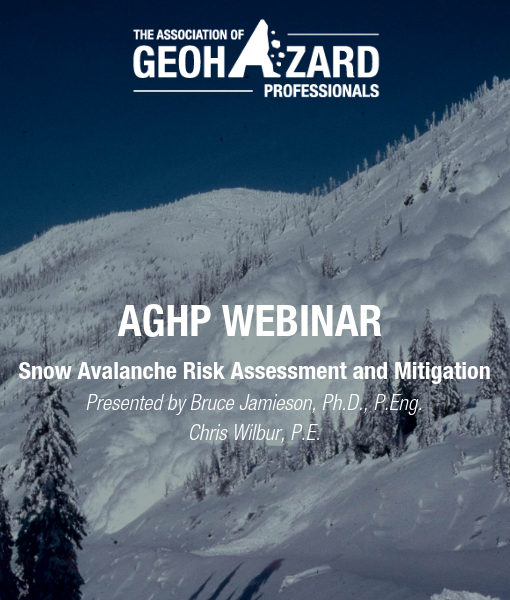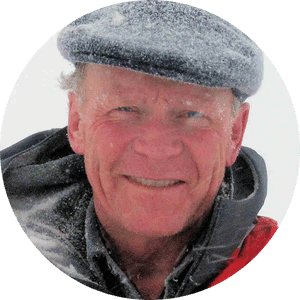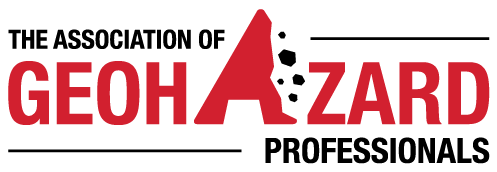View this webinar on-demand by logging into the Member Center. If you are not a member, we encourage you to join.
Snow Avalanche Risk Assessment and Mitigation
In this webinar, the presenters identified aspects of snow avalanches that are different from other geohazards:
- explosives are effective triggers;
- more occurrences;
- impact forces are lower;
- the failures initiate in a bonded material within a few degrees of its melting point;
- the deposits disappear within months.
During the webinar, the effects of these differences on assessment and/or mitigation methods are illustrated. Selected methods for characterizing snow avalanche terrain and extreme snow avalanches will be outlined, including occurrence records, vegetation damage, statistical runout models, and dynamic runout models. Short examples of qualitative and quantitative assessment and mapping methods will be presented for transportation corridors, occupied structures, transmission lines, and forests. Examples of mitigation methods including structural defences and remote avalanche triggering systems will be presented.

Presented By:

Bruce Jamieson, Ph.D., P.Eng.
Professor Emeritus, Dept. of Civil Engineering, University of Calgary, Alberta
Senior Engineer, Snowline Associates Ltd., Calgary, Alberta
Dr. Jamieson has over 35 years of experience spanning snow avalanche risk management, hazard and risk assessment, snow and avalanche research, avalanche forecasting, and avalanche control. He was president of the Canadian Avalanche Association (CAA) from 1992 to 1995, chaired the 1996 International Snow Science Workshop in Banff, Alberta, and the CAA's Technical Committee until 2004. During the summers of 2002 and fall of 2008, he was a guest researcher at the Swiss Federal Institute for Snow and Avalanche Research. While a professor of Civil Engineering at the University of Calgary, Bruce supervised 24 graduate students investigating avalanche issues including runout estimation, hazard mapping, and avalanche forecasting. Dr. Jamieson has co-authored over 70 papers in ISI journals: plus over 100 conference papers. He is the first author and editor of Planning Methods for Assessing and Mitigating Snow Avalanche Risk. Bruce is a Professional Engineer registered in British Columbia and Alberta. He currently works as an avalanche consultant and engineer on projects for transportation corridors, pipelines, transmission lines, mines, ski lifts, and residential developments; as well as backcountry huts and trail networks.

Chris Wilbur, P.E.
Avalanche Defense Engineer, Wilbur Engineering, Inc., Durango, Colorado
Chris is an avalanche defense engineer with 28 years of consulting experience. He earned a B.S. in Geological Engineering from the Colorado School of Mines and an M.S. in Civil (Geotechnical) Engineering from the University of Colorado at Boulder. He specializes in avalanche mapping, risk assessments and structural defenses. In 2006, he began working with Art Mears, P.E., an internationally recognized avalanche control engineer and co-editor of the Technical Avalanche Protection Handbook, published by Ernst & Sohn in 2014. Chris's clients include state DOTs, mining companies, electric power providers, pipeline companies, ski resorts and commercial and residential developers. He is a licensed civil engineer in five western states.
